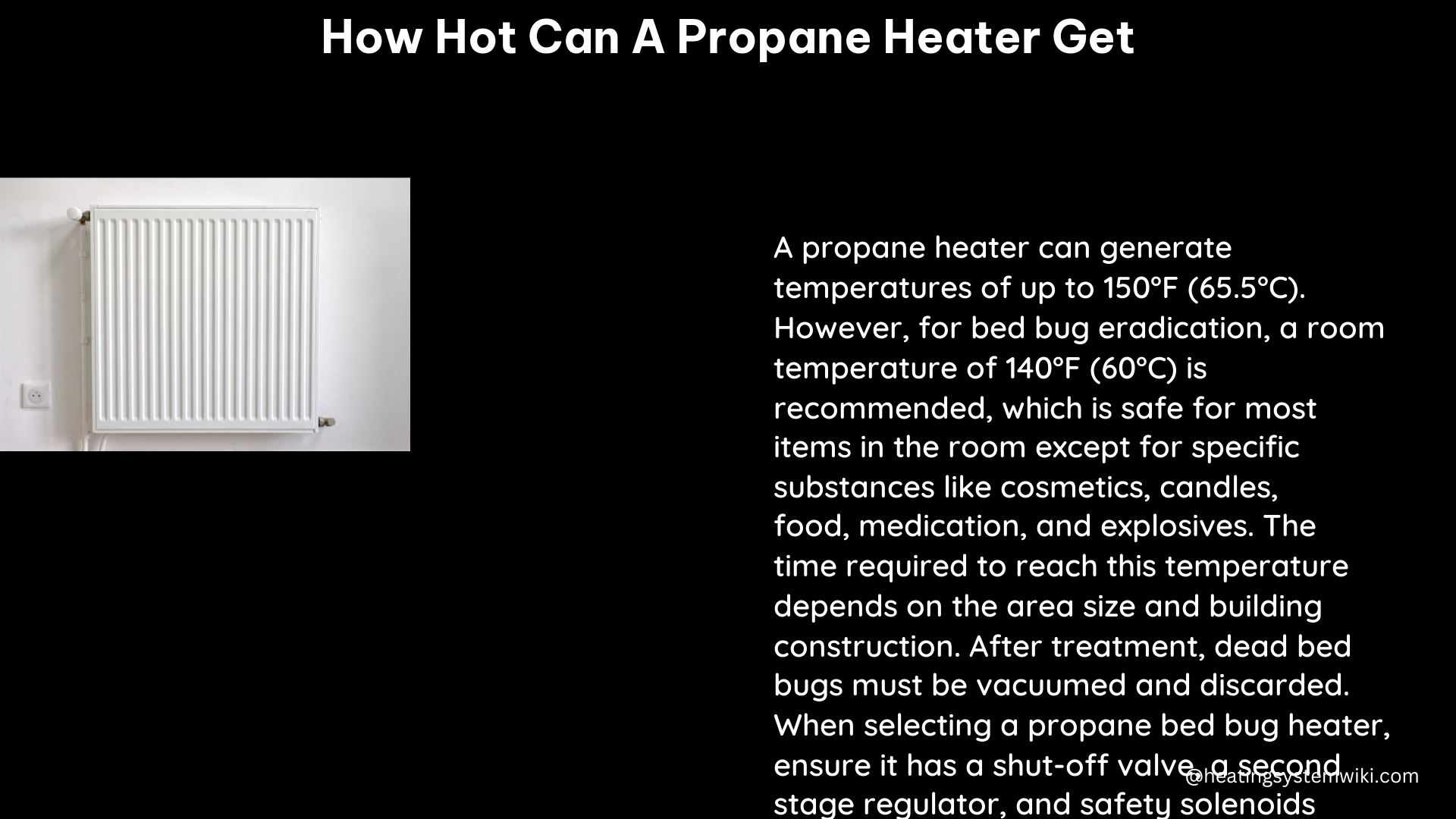Propane heaters are a popular choice for providing supplemental heat in various settings, from outdoor gatherings to indoor spaces. However, understanding the maximum temperature these heaters can reach is crucial for ensuring safe and effective use. In this comprehensive guide, we’ll delve into the technical details and explore the factors that influence the heat output of propane heaters.
Understanding the Maximum Temperature of Propane Heaters
The maximum temperature that a propane heater can reach is typically around 700 degrees Fahrenheit (371 degrees Celsius), as demonstrated in a video from a reputable source. However, it’s important to note that the actual temperature can vary depending on the specific model and usage conditions.
Factors Affecting Propane Heater Temperature
Several factors can influence the maximum temperature of a propane heater, including:
-
Heater Model and Specifications: Different propane heater models may have varying heat output capabilities. Factors such as the burner size, BTU (British Thermal Unit) rating, and design can all contribute to the maximum temperature.
-
Fuel Pressure and Flow Rate: The pressure and flow rate of the propane fuel supply can impact the heat output. Higher fuel pressure and flow rate can result in higher temperatures.
-
Ambient Temperature and Airflow: The surrounding air temperature and the amount of airflow around the heater can affect the heat dissipation and, consequently, the maximum temperature.
-
Usage Duration: Prolonged use of a propane heater can lead to gradual temperature increases, as the internal components heat up over time.
-
Maintenance and Cleanliness: Proper maintenance, including regular cleaning and servicing, can help maintain the heater’s efficiency and maximize its heat output.
Practical Examples and Observations
To illustrate the temperature variations, let’s consider the following examples:
-
Big Buddy Heater: In the video mentioned, the Big Buddy Heater was capable of producing heat up to 700 degrees Fahrenheit (371 degrees Celsius) when operating on the high setting. However, when tested after running for 10 minutes, the temperature was only around 400 degrees Fahrenheit (204 degrees Celsius).
-
Propane Heaters for Bed Bug Treatment: Propane heaters used for bed bug treatments typically operate at lower temperatures, around 150 degrees Fahrenheit (66 degrees Celsius). This temperature is hot enough to damage items in a room or home, but the ideal temperature for effectively killing bed bugs and their eggs is between 111-117 degrees Fahrenheit (44-47 degrees Celsius).
Ensuring Proper Temperature Distribution and Safety

When using a propane heater for applications such as bed bug treatment, it’s crucial to ensure that the temperature is evenly distributed throughout the room and that all cracks and crevices reach the desired temperature. This can be achieved by using a temperature sensor, monitoring system, or an infrared temperature gun to check and monitor the temperatures.
Additionally, it’s important to prioritize safety when using propane heaters. Ensure that the heater is used in a well-ventilated area and that all flammable materials are removed from the room before treatment. In some cases, it may be recommended to use electric heat for bed bug treatments, as it is generally safer and easier to control the temperature.
Conclusion
In summary, the maximum temperature that a propane heater can reach is typically around 700 degrees Fahrenheit (371 degrees Celsius), but the actual temperature can vary depending on the specific model and usage conditions. For specialized applications like bed bug treatment, propane heaters are often used at lower temperatures, typically between 111-117 degrees Fahrenheit (44-47 degrees Celsius).
When using a propane heater, it’s essential to consider factors such as the heater model, fuel supply, ambient conditions, and usage duration to ensure safe and effective operation. Proper temperature monitoring and distribution, as well as adherence to safety guidelines, are crucial for achieving the desired results while minimizing risks.
By understanding the technical details and best practices surrounding propane heater temperatures, you can make informed decisions and utilize these versatile heating solutions effectively and safely in your various applications.
